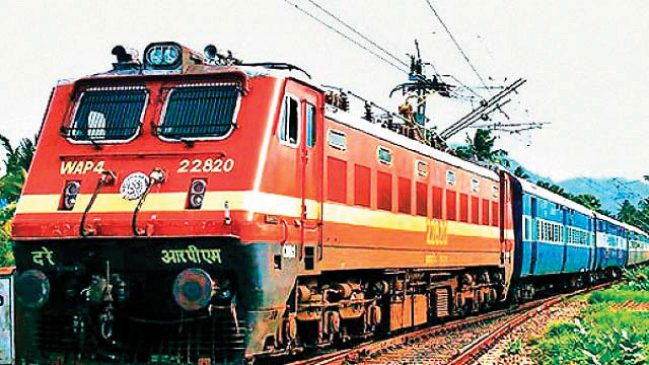Medical facilities: In a bid to offer medical facilities to its employees and former employees, the Indian Railways has announced a card system called Unique Medical Identification (UMID). These cards are specifically meant for its employees, pensioners, and their dependents.
UMID is a system that assigns a distinctive number to each medical beneficiary to create a permanent record. This unique identity is equipped with a web-enabled QR code and biometric identification, all of which are securely stored in a centralsed national database. The primary goal of UMID is to enhance the efficiency of accessing medical services and to guarantee that beneficiaries are entitled to complimentary treatment at hospitals within the railway panel and at prestigious institutions like the All India Institutes of Medical Sciences (AIIMS).
Also Read : Railway Board Chairman Calls For Major Recruitment To Support Expanding Rail Assets
This card can be created with a low cost of only Rs 100. The implementation of this new system is set to provide advantages to approximately 12.5 lakh employees, over 15 lakh pensioners, and around 10 lakh dependents of the Railways.
This initiative aims to ensure individuals have seamless access to medical facilities, effectively resolving any issues related to doctor referrals. Patients will not need referrals for treatment at esteemed national institutes such as PGIMER Chandigarh, JIPMER Puducherry, NIMHANS Bangalore, and all 25 AIIMS facilities across the nation. Additionally, besides treatment, essential medications will also be made available at these renowned healthcare institutions.
UMID Card Expansion
Accessibility: Applying for the UMID card has been made more convenient through the use of web and mobile applications, enabling individuals to undergo the application process from any location with internet access. This enhanced accessibility streamlines the procedure and offers greater flexibility to applicants.
Convenient Health Services: Railway hospitals now provide enhanced ease of access to health services, elevating the overall user experience. Users can easily navigate through the healthcare system and avail of necessary medical assistance promptly, contributing to improved health outcomes and customer satisfaction.
Also Read : Kolkata Metro Update: 262 Blue line services to run on September 17 for Vishwakarma Puja
Identification: The UMID card, in its physical form, functions as a dependable identification tool across various health units, ensuring seamless verification processes and enhancing security measures within the healthcare infrastructure.
Anytime Access: By offering identification services at any health unit and at any time, the UMID card guarantees consistent access to medical services for individuals, removing barriers related to time and location. This feature establishes a reliable foundation for delivering healthcare services efficiently.
Beneficiary Updates: Managing and updating beneficiary details and their particulars has been simplified through the UMID system, facilitating the swift and accurate modification of crucial information. This enhancement promotes data accuracy and ensures that beneficiaries receive the necessary support promptly.
Automatic Validation: The UMID card incorporates built-in validation features that automatically check and update eligibility conditions, eliminating the need for manual intervention in the verification process. This automation reduces errors and expedites service delivery, enhancing operational efficiency.
Rule Integration: Utilising a rule engine, the UMID system automates rule application, significantly reducing the requirement for manual scrutiny in various processes. This integration streamlines operations, improves decision-making accuracy, and optimises resource allocation within the healthcare ecosystem.
Also Read : Mercedes-Benz EQS SUV India launch on September 16, Here’s All You Need to Know
Kiosk interface: The kiosk interface is designed to enable the automatic generation of Outpatient Department (OPD) slips through intelligent hospital interfaces and kiosks. This feature streamlines the process of issuing OPD slips, making it more efficient for both patients and healthcare providers.
Payments: In terms of financial transactions, the system facilitates debits and credits between different health units, simplifying financial processes within the healthcare system. This functionality helps in ensuring smooth and accurate financial transactions across various departments and units.
Multiple identity Sources: Moreover, the system supports multiple sources of identity verification and validation, enhancing convenience for all stakeholders involved. By integrating multiple identity sources with system-based validation, the system ensures the accuracy and security of identity verification, providing a seamless experience for users.
How to apply
The process of registering and applying for a Smart Medical Card involves three main steps:
Access
To access the application, you can visit the web application URL: digitalir.in/umid.
Alternatively, you can download the mobile application from the Google Play Store.
Registration
Select the type of beneficiaries you fall under, which includes options such as employee, pensioner, or others.
Provide your identity particulars, including your PAN, date of birth, and PF number.
Register your mobile number by entering it and completing the registration process.
Initiate application
Log in by entering the OTP that you receive on your registered mobile number.
Start a new application process by initiating a new application.
Enter personal details for yourself and your family members during the application process.
Upload the necessary documents according to the checklist provided and submit your application.





































